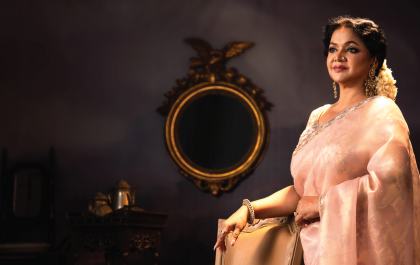Why music can be a powerful learning tool in secondary schools
By Faeeja Humaira Meem
Remember how English classes used to be? They were often about memorizing grammar rules, drilling vocabulary, and, let’s face it, sometimes they were just plain boring. Students would yawn their way through grammar exercises, and teachers would try to make it engaging but often struggled. Of course, since then, we’ve had teachers try to come up with creative solutions to make the classroom livelier, and for me, one of the most remarkable outcomes of incorporating K-pop into education is the newfound sense of joy in learning.
K-pop is a common topic among the younger generation now, whether it’s a positive discussion or quite the contrary. During my first week of teaching, I came across students often arguing about it, and usually, the fans get called names and made fun of. Our society had constructed an image that K-pop was “cringy” or “uncool,” and many of my students held these preconceived notions close to their hearts. I asked my sixth graders, initially apprehensive about venturing into the world of K-pop, to watch a music video by BTS known as “Spring Day” and write an unbiased review. I not only intended to test their comprehension skills, but also sneakily introduce a new culture to their lives.
Their hesitation was palpable; some students had their guards up, resistant to embracing what they perceived as an unfamiliar and potentially embarrassing genre of music. At the outset, a few students remained reluctant, holding onto their initial judgments. They were hesitant to immerse themselves in the music video and the lyrics, fearing ridicule from their peers or even themselves. However, the next day when they were asked to show me their homework, something remarkable happened.
The narrative within “Spring Day” began to resonate with them. The subtleties of the song’s lyricism and the captivating story-telling within the music video started to break down their initial resistance. Some of them surprised me by going further and researching the background of the music video and empathizing with the hundreds of school-children who lost their lives during the Sewol ferry tragedy that the music video was referring to. I obviously expected this from the fans, but to my delight, the students who initially hesitated discovered that beneath the flashy exterior of K-pop lay genuine artistry and story-telling that transcended language barriers and cultural differences.
This transformation was a revelation, emphasizing the importance of keeping an open mind and giving new experiences a fair chance. It was a testament to the potential of music, even in the form of pop music, to challenge stereotypes and bridge cultural gaps.
Unfortunately, not all students had shed their prejudice. Some voiced their misconceptions, such as boys should not wear makeup or that they were bored by the music, without giving it a second thought. These comments provided a valuable opening for a classroom discussion on prejudice and stereotypes.
We discussed how it’s essential to challenge stereotypes and appreciate diversity. BTS, as a group, has not only redefined masculinity but has also championed inclusivity. I brought up how BTS made their music video “Permission to Dance” accessible to deaf people by incorporating sign language. This real-life example struck a chord with the students, emphasizing the importance of embracing differences and being open to new experiences.
Later, I asked my students to analyze the lyrics of “Spring Day” for literary devices. In a traditional classroom setting, analyzing literary devices could be perceived as a dry and academic exercise disconnected from the students’ real-life experiences and interests. However, I realized that when I entered K-pop into the equation, the dynamic changed. The students took this opportunity to decipher a treasure map, unlocking the hidden meanings and metaphors embedded within the song.
This engagement is not limited to literary analysis. As students delve into the world of K-pop, they not only break down prejudices but also gain a deeper understanding of Korean culture
Furthermore, K-pop provides a bridge to cultural awareness and appreciation. Beyond language, K-pop music videos often incorporate elements of Korean culture, tradition, and history. These visual representations offer students a window into a world that may have been unfamiliar to them. For instance, the music video for IU’s “Palette” showcases various aspects of Korean culture, from traditional clothing (hanbok) to contemporary art and design. As students engage with this video, they not only appreciate the visual aesthetics but also gain cultural insights. They recognize the seamless blend of tradition and modernity, fostering an appreciation for the rich tapestry of Korean culture.
Moreover, K-pop’s global reach opens doors for discussions on globalization and geography. Students can explore the countries where K-pop is popular, its profound influence on global pop culture, and even engage in virtual cultural exchanges with students from South Korea or other parts of the world. It’s a chance to promote cross-cultural understanding and recognize the interconnectedness of our world.
The journey into the educational realm of K-pop is a transformative one. It transcends traditional boundaries and redefines the way we approach teaching and learning. K-pop is not merely a genre of music; it is a cultural phenomenon that bridges gaps, fosters inclusivity, and sparks joy in the hearts of students.
As educators, our primary responsibility is to instil a love for learning, and K-pop provides an exceptional platform to achieve this. Whether you’re a teacher or a student, consider how K-pop can elevate the educational journey, making it more enjoyable and meaningful. It’s not just about learning English or Korean; it’s about embracing diversity, appreciating the artistry of K-pop, and finding joy in the process of discovery. K-pop has the power to revolutionize education, one song at a time.













